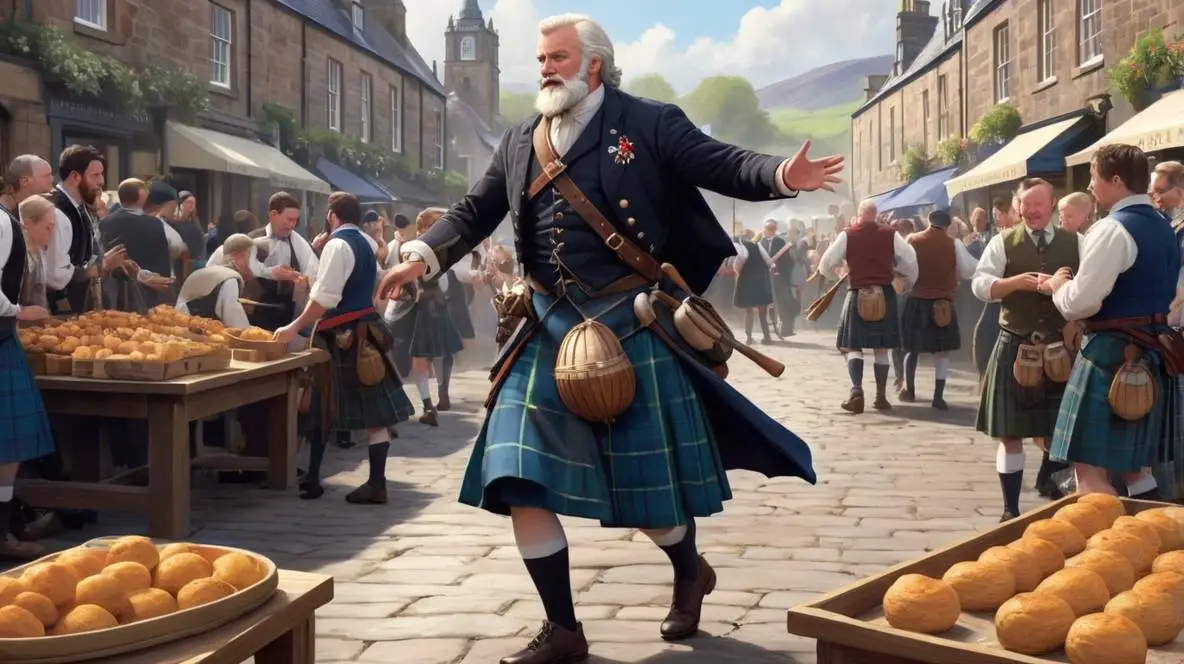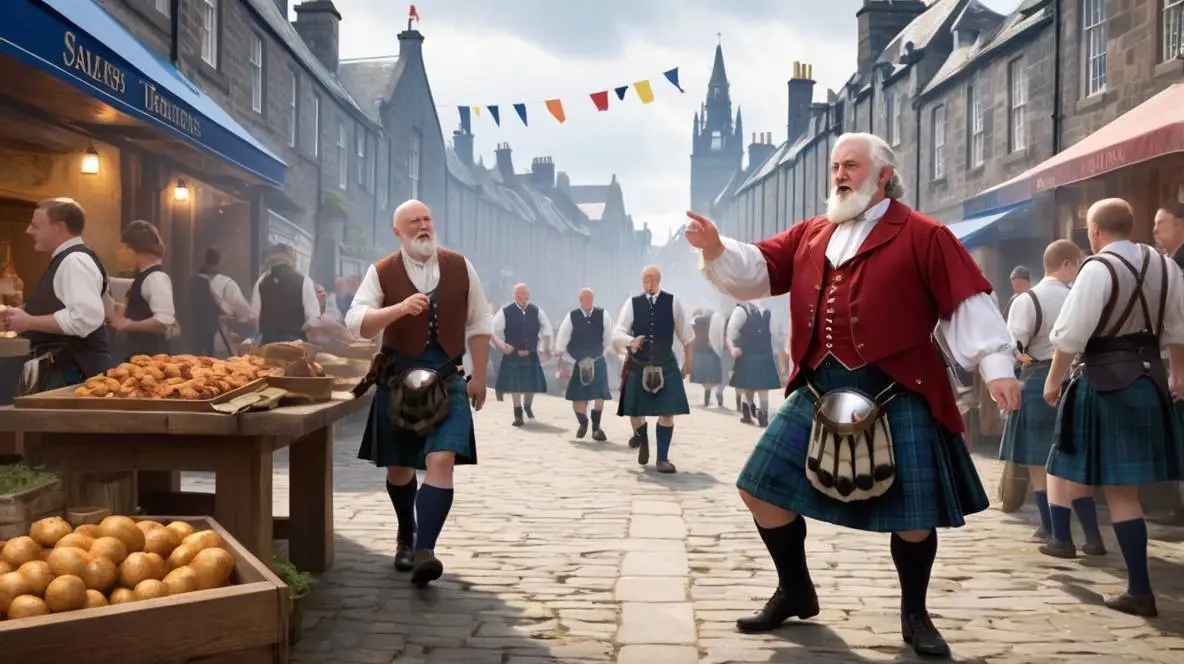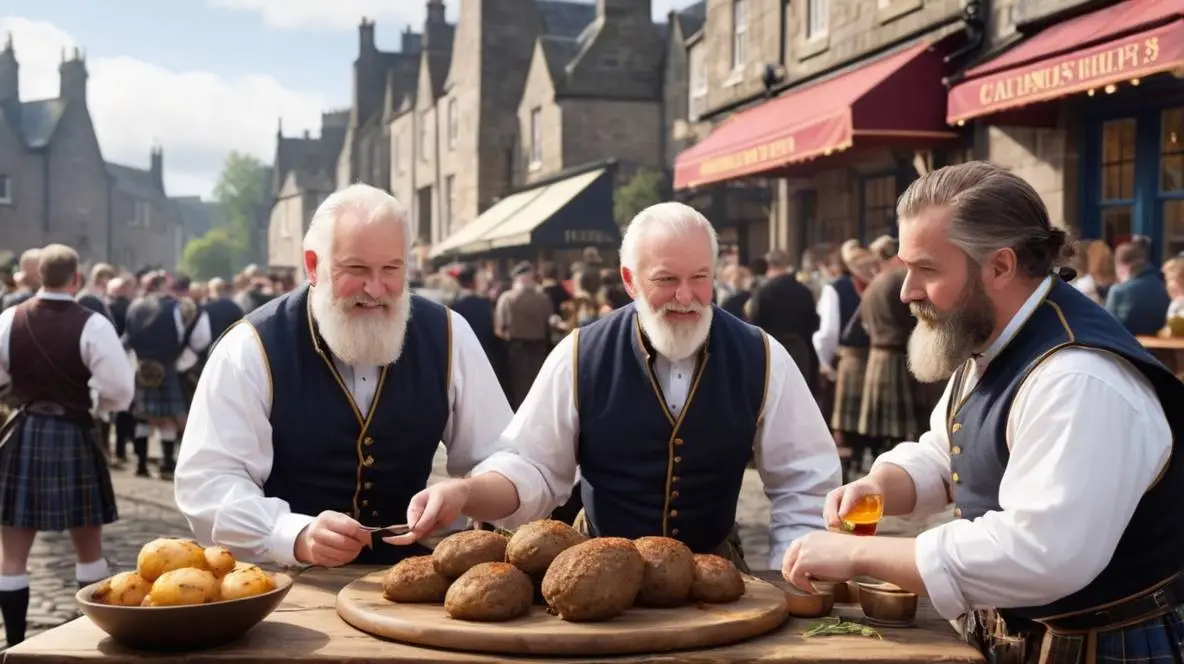St. Andrew’s Day
St. Andrew’s Day: A Celebration of Scotland’s Patron Saint
St. Andrew’s Day, celebrated annually on November 30, holds a special place in the hearts of Scots and anyone with ties to Scottish heritage. As the patron saint of Scotland, St. Andrew represents more than just a religious figure; he embodies the spirit and identity of the nation itself. This day, rich in history and tradition, marks the beginning of Scotland’s winter festival, uniting communities through food, music, dance, and a deep sense of national pride.

- St. Andrew’s Day 2025 – Sunday, November 30
- St. Andrew’s Day 2026 – Monday, November 30
- St. Andrew’s Day 2027 – Tuesday, November 30
- St. Andrew’s Day 2028 – Thursday, November 30
The Historical Background of St. Andrew’s Day
St. Andrew’s Day isn’t just another calendar date—it is deeply rooted in centuries of history, starting with the life of St. Andrew himself. Understanding the significance of this day requires delving into the origins of the saint and the events that led to his association with Scotland.
Origins of St. Andrew
St. Andrew was one of the twelve apostles of Jesus Christ. Born around 5 AD in Bethsaida, Galilee, he worked as a fisherman before answering the call to follow Jesus. After Christ’s crucifixion, Andrew spread the Christian message far and wide, traveling through regions such as Scythia and Thrace. His missionary work eventually led to his martyrdom.
According to tradition, St. Andrew was crucified on an X-shaped cross, a symbol now known as the Saltire. This distinctive cross is prominently featured on Scotland’s national flag, signifying both faith and national pride. The cross has become synonymous with Scotland, and it is one of the key reasons why St. Andrew holds such an important place in the country’s identity.
The Connection to Scotland
The connection between St. Andrew and Scotland began in the 4th century, when relics believed to be of St. Andrew were brought to the town of St. Andrews in Fife by a monk named St. Regulus. These relics led to the establishment of St. Andrew’s Cathedral, which became a significant religious center in the region.
Over time, St. Andrew’s influence grew, and by the 12th century, the town of St. Andrews had become a popular pilgrimage site. This marked the beginning of the association between St. Andrew and Scotland—a connection that has only deepened over the centuries.
St. Andrew Becomes Scotland’s Patron Saint
St. Andrew was officially declared Scotland’s patron saint in 1320 during the signing of the Declaration of Arbroath. This document was an assertion of Scottish independence and sovereignty, and St. Andrew’s role as the national patron saint symbolized the unity and distinctiveness of Scotland in the face of external pressures.
It was around this time that the Saltire flag became a national emblem, representing both Scotland’s Christian heritage and its growing national identity.
Modern Celebrations of St. Andrew’s Day
Today, St. Andrew’s Day is not only a religious observance but a vibrant cultural celebration. Recognized as an official bank holiday in Scotland since 2006, the day brings together Scots of all backgrounds to honor their patron saint and celebrate the country’s rich heritage.
Cultural Significance of St. Andrew’s Day
In modern Scotland, St. Andrew’s Day has grown into a celebration that encompasses much more than religious observance. The day has become an occasion for honoring Scottish culture, traditions, and values. It’s a time for Scots to come together, whether in Scotland or abroad, to celebrate the heritage that defines them.
Food and Drink Traditions
A key aspect of St. Andrew’s Day celebrations is food. Traditional Scottish dishes take center stage, with meals such as:
- Haggis – A savory dish made from sheep’s heart, liver, and lungs, mixed with oats and spices, traditionally served with neeps (swede) and tatties (potatoes).
- Cullen Skink – A creamy fish soup made from smoked haddock, potatoes, and onions.
- Cranachan – A delicious dessert made with cream, raspberries, oats, and whisky, embodying the flavors of Scotland.
These traditional dishes not only fill the stomach but also serve as a reminder of Scotland’s culinary history.

Music and Dance: The Heartbeat of St. Andrew’s Day
No St. Andrew’s Day celebration is complete without music and dance. In communities across Scotland, people gather to enjoy ceilidh dancing, a lively form of traditional folk dance, often accompanied by the soulful sounds of the bagpipes. The music and rhythm create a sense of joy and unity, and the ceilidh becomes a highlight of the evening, where Scots of all ages join in the fun.
Festivals and Parades
While St. Andrew’s Day is celebrated nationwide, certain cities and towns hold larger, more elaborate events. Edinburgh, the capital city, hosts a variety of cultural events, from storytelling sessions to street markets, concerts, and parades. In St. Andrews, the town’s namesake, a week-long festival culminates in grand celebrations on November 30th.
Traditional Customs
In addition to food, music, and dance, St. Andrew’s Day also carries with it a number of traditional customs:
- Rituals for Young Women – In some parts of Scotland, young women partake in rituals on the eve of St. Andrew’s Day to predict their future husbands. These customs vary by region but are part of the charm of the holiday.
- Free Admission to Historical Sites – Many historical sites in Scotland, such as those managed by Historic Scotland, offer free entry on St. Andrew’s Day, allowing Scots and tourists alike to immerse themselves in the nation’s rich history.

The Start of Advent
St. Andrew’s Day marks the beginning of Advent in the Christian calendar. As the start of the liturgical year, it is a time for reflection, prayer, and preparation as Christians look toward the Christmas season. The religious observances tied to St. Andrew’s Day connect the holiday to broader Christian traditions, offering a chance for Scots to observe both the secular and spiritual aspects of the day.
Global Recognition of St. Andrew’s Day
While St. Andrew’s Day is primarily celebrated in Scotland, the saint is also recognized as a patron saint in other countries with Christian and Orthodox ties. Countries like Romania, Greece, Russia, and Ukraine also honor St. Andrew on November 30, though their customs and traditions may differ.
In these countries, similar festivities take place, highlighting the cross-cultural significance of St. Andrew’s legacy. Whether through religious observances or community gatherings, St. Andrew’s Day offers a moment for people to connect to their shared Christian history and to each other.
Honoring the Legacy of St. Andrew
St. Andrew’s Day is far more than a religious observance; it is a celebration of Scotland’s unique cultural identity, history, and traditions. From the origins of St. Andrew as a missionary and martyr to his enduring role as Scotland’s patron saint, the day serves as a reminder of the country’s rich heritage and the values that continue to shape its modern identity.
Whether through the food we eat, the music we play, or the customs we observe, St. Andrew’s Day brings people together. It is a day for Scots at home and abroad to celebrate what makes them proud of their Scottish roots, while also sharing the warmth and joy of the holiday with the wider world.


